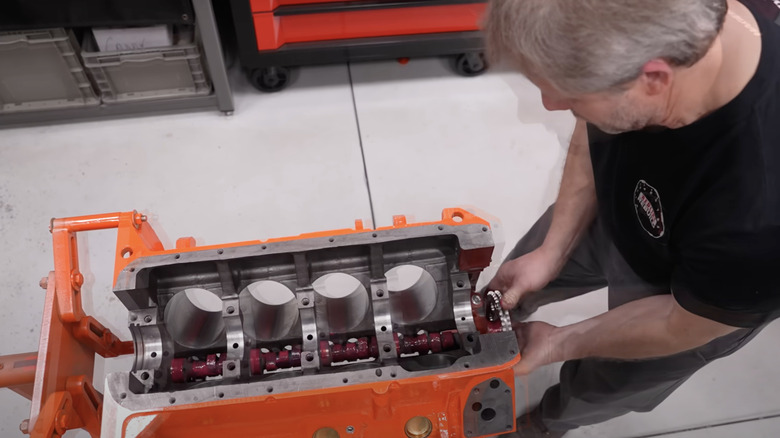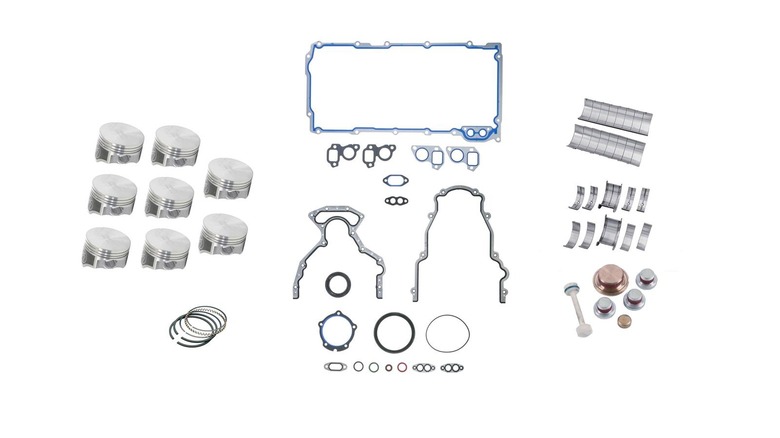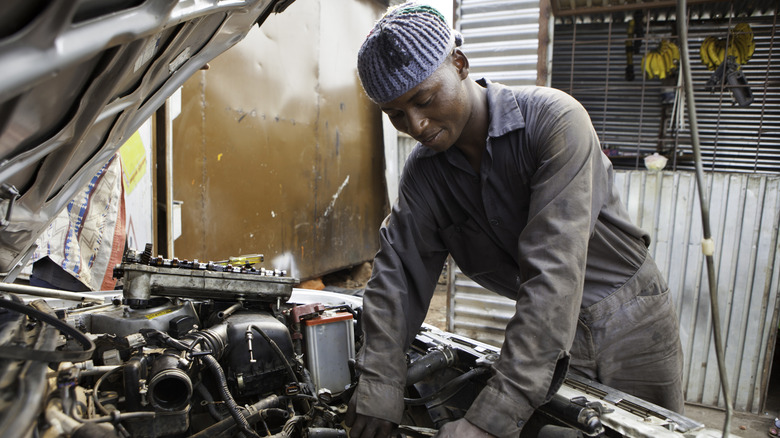Is It Cheaper To Buy A Crate Engine Or Build One?
No matter how well you take care of your car's engine, the time will inevitably come when it reaches the end of its useful life. You may reach this point gradually with a slow loss of power and fuel economy, or you may experience a catastrophic failure when an engine bearing or timing belt fails. When your engine finally gives up the ghost, you have a couple of choices. You can go with a rebuilt or remanufactured engine, purchase a factory-new one from the dealership, or build your own engine. Factory and aftermarket performance crate engines can cost several thousand dollars, but building an engine is not for novice mechanics nor the faint of heart. In my nearly 40 years working on cars as a professional and amateur mechanic, I have done countless engine replacements and swaps, although I have only taken on the task of building an engine a handful of times. It's a delicate job that requires precision, expertise, and special tools.
When you buy from a reputable crate engine reseller like Summit Racing or BluePrint Engines, you usually get warranty coverage on these assemblies. But building your own engine means taking sole responsibility for any build-related problems like incorrect bearing clearances, which need to be adjusted to within thousands of an inch. Although you can theoretically save a little money by buying new engine components versus purchasing a crate engine, once you consider everything involved, the prudent move for most people is to buy a ready-to-run engine assembly.
Both options will require spending thousands of dollars
For a measuring stick, let's consider the 5.3 liter Chevy LS series V8. A long block assembly from Summit Racing costs $3,799.99 and you should be able to use your existing belt-driven accessories, radiator, and starter with the new engine. Another option is to send your block and heads or a salvage yard donor to a machine shop and buy all new internals and valve train components. A rebuild kit with gaskets, pistons, rings, seals, and main bearings will set you back in the neighborhood of $500 to $800, and that's just the start. Prepping your block and heads to get them ready for new components will cost a few hundred more, and you still need to buy a crankshaft, camshaft, and valve components.
These parts can easily add more than a thousand dollars or more to the cost of your engine build, and you still have to include the cost of smaller items like valve covers, an oil pan, fluids, fasteners, and hoses. Many of these minor purchases will be necessary even if you buy a crate engine, but keep in mind that the material costs of a DIY engine build will always be more than the incidental expenses involved with a swap. If you decide to build an LS engine, you'll likely have spent more than two thousand dollars before you factor in the value of the time you'll spend planning, executing, and worrying about your engine build.
Building an engine is best left to the experts
Assembling an engine can take dozens of hours, even for experienced professionals. Aside from the actual project labor, you'll end up making innumerable runs to the parts store, online research expeditions, and desperate phone calls. Then, once you finally get everything all bolted together again and drop your new engine back in your car, every rattle and hesitation will have you thinking back over every step, wondering if you did something wrong.
While you might be able to save a little money building an engine, once you factor in the time and stress involved, it's best for most people to trust the engine building to those who do it full-time and offer you a warranty for their finished product. Even as an experienced mechanic, this is a job I almost always feel better leaving to specialists. If you want to save money on your engine replacement, a much better way to do so is by removing the old engine and installing the new one yourself. This is a task you can complete safely with the guidance of your car's factory service manual, online resources, an able-bodied helper, and a rented engine hoist.


